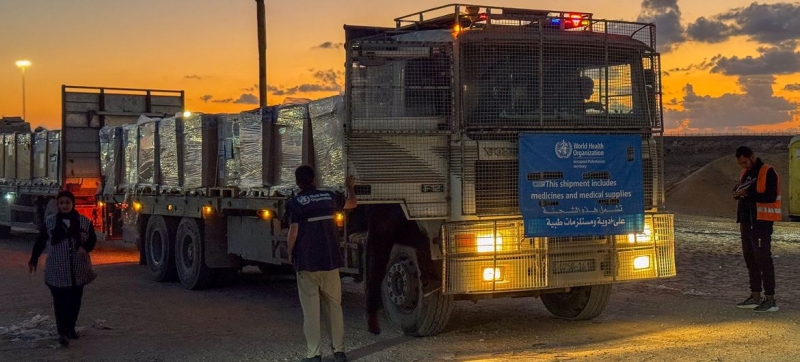
Truck at the Kerem Shalom checkpoint. ‘Colossal’ demand for food aid in Gaza amid fragile truce Humanitarian assistance
The truce in Gaza has allowed UN humanitarian missions to reach most of the people on the brink of famine. However, according to representatives of the World Food Program (WFP), humanitarian organizations need significantly greater access to the sector.
WFP senior regional communications officer Abir Etefa told reporters in Geneva on Tuesday that since the truce went into effect on October 11, the agency has managed to deliver more than 6,700 tons of food into Gaza – enough to feed nearly half a million people for two years. weeks.
“Daily supplies continue and are now about 750 tons per day,” Etefa said. “That’s much more than it was before the truce, but still well short of our goal of about 2,000 tons daily.” Checkpoints
At the moment, only the Kerem Shalom and Kissufim checkpoints in the south are open, but “serious destruction” makes it difficult to transport goods from the southern part of the sector to the northern, where famine was officially declared back in August.
“We need to open the Erez and Zikkim crossings,” Etefa emphasized.
She said the priority remains the delivery of food to northern Gaza in large convoys.
The rubble at border crossings has been cleared, Etefa said, allowing access to Gaza City, where the situation is particularly dire. “But if the crossings are not opened, we will not be able to send large shipments of humanitarian aid there,” she said.
Food distribution
WFP began to restore the food distribution system. The food is planned to be distributed at 145 points throughout the sector. At the moment, 26 points have already resumed work.
“The response from people was truly colossal,” said Etefa. According to her, a lot of people come to the distribution points, they express gratitude for the speed of deliveries and the “decent conditions” in which they can receive their food rations.
Cautious optimism
Despite the improving situation, there is now “cautious” optimism in Gaza, a WFP spokeswoman said. Many residents of the sector, having received food assistance, eat only part of the food and save the rest “for a rainy day” – because “they do not know how long the truce will last and what will happen next.”
“This is a fragile peace,” Etefa noted. She also said that food prices in Gaza are still very high, and the majority of the population cannot afford food.
“There is food in the market, but for many it is simply out of reach – it is too expensive,” she said Etefa.
Cash Assistance
WFP provides assistance to those in need through digital payments, which have already enabled 140,000 people to buy food at local markets. The program is set to double in size in the coming weeks.
Etefa reiterated her call for commercial supplies to be allowed into Gaza in addition to humanitarian aid.
“Humanitarian aid alone will not solve the problem of malnutrition and provide a nutritious diet,” she explained.
According to a WFP spokesman, only full compliance with the terms of the truce will allow the agency to act on the scale necessary to overcome the crisis.
“It is very important that the truce be maintained, – Etefa emphasized. “This is, in fact, the only way to save lives and stop the spread of famine in northern Gaza.”
